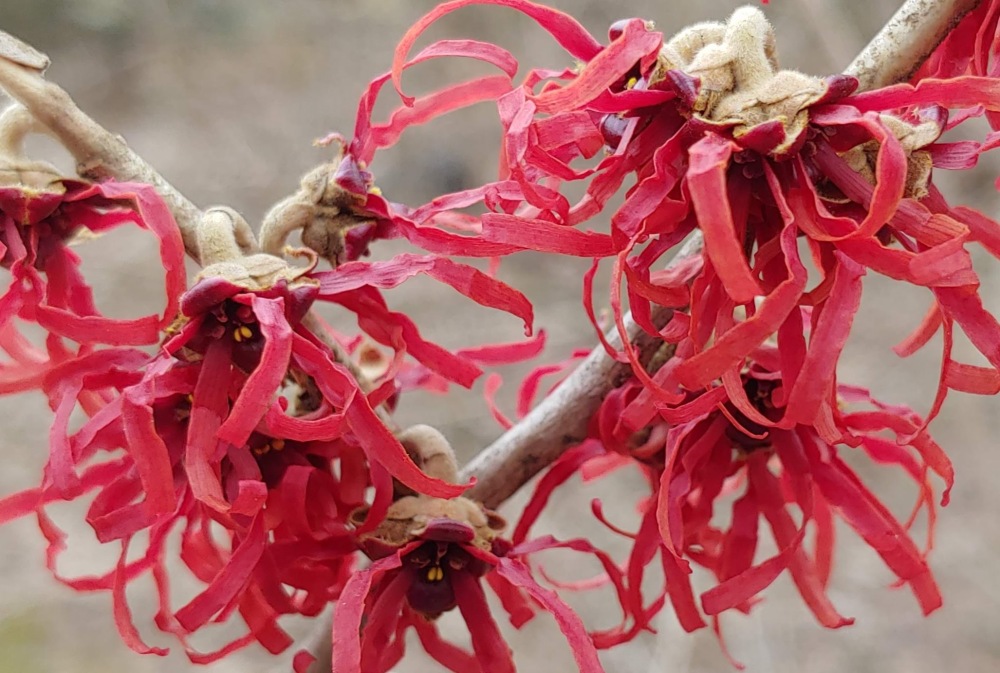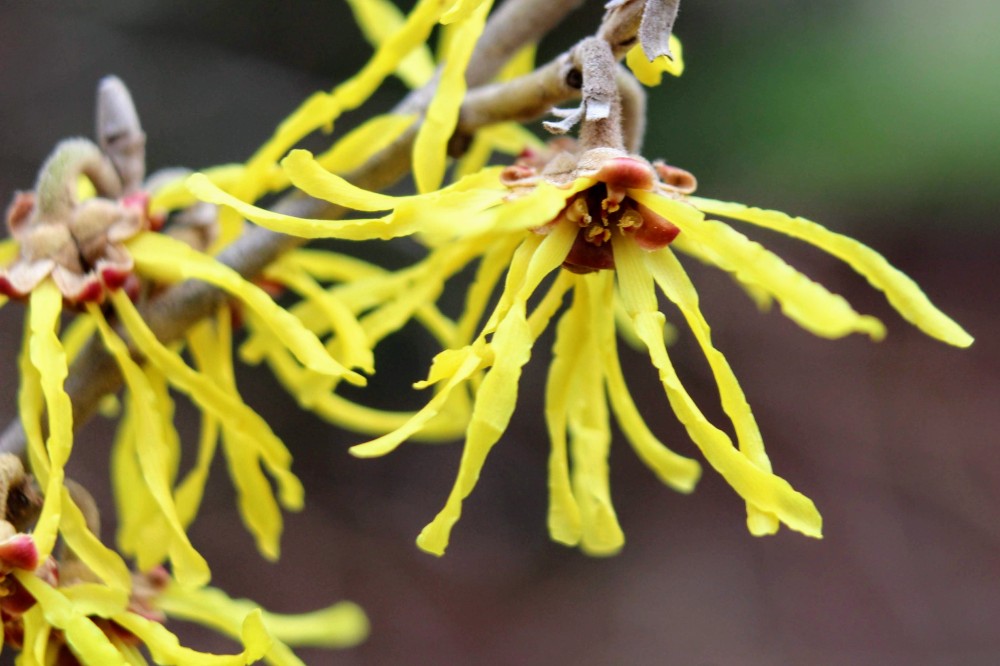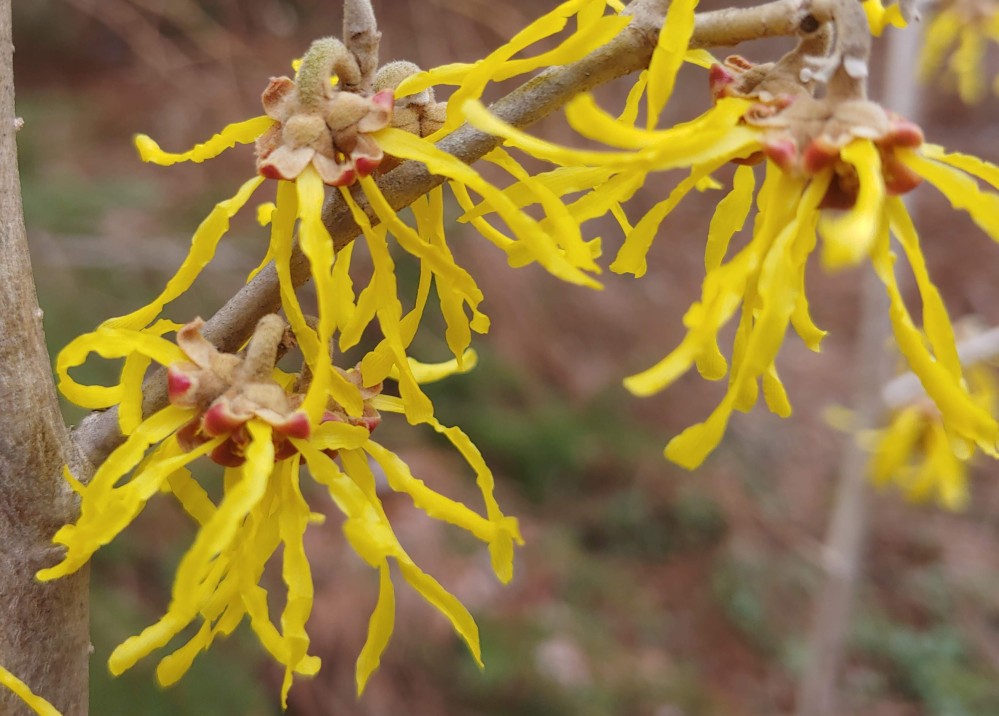Curiously, two witch hazels (Hamamelis x intermedia), the red flowered ‘Diane’ and copper colored ‘Jelena’, flowered in mid-autumn, with no weather related cause that I could determine. I was, of course, concerned at the time that flowering then would mean no blooms in February, an unwelcome tradeoff since there are numerous other flowers in autumn, though as it turned out, only branches on half or so of each shrub flowered early.


Now, in mid-February, the other halves are flowering along their typical schedule, and though flowering is diminished, there are still sufficient flowers to fill the lower garden with scent on this mild winter afternoon. A second ‘Diane’ has become overly shaded by the wide spreading katsura (Cercidiphyllum japonicum), and it has only a few flowers. I excuse that errors such as this are inevitable, with the quantities that have been planted over thirty years, and perhaps this witch hazel can be rescued in spring, to transplant to a more open spot. But if not, it will be lost in another year.

Inevitably, plants will come and go over three decades, but ‘Diane’ is one that can possibly be salavaged before it is lost. I noticed a while back that lower branches of the tree were shading the witch hazel, but not unusually, I didn’t give it another thought until I noticed the sparse flowering a week ago. Witch hazels of this size, about four feet tall, are moved with relative ease, I’ve found, with the half blooming ‘Diane’ successfully transplanted several years earlier.
A very large ‘Arnold Promise’ was lost several years ago as the spring that emanates from under the garden shed suddenly quadrupled its output, turning ideally moist ground into constant dampness. A holly was also lost, and more tolerant wetland shrubs were planted in their place. After a year of consideration, a spot for a new ‘Arnold’ was found, and today this is flowering nicely.
After the original ‘Arnold’ was lost, I realized I could not be satisfied by only red and copper colored witch hazels. Perhaps the yellow of ‘Arnold Promise’ is too ordinary, such as that of ubiquitous forsythias, but in my mild version of color blindness yellow stands out from a distance, and how could I survive the winter without it?


So nice to see the bees Dave! 😀
At least for a few hours, and probably not again for another week.
They are so much prettier in pictures. I do not notice them so much when loading them on the truck to go out on delivery. In our climate, the reliable autumn color is as important as the bloom. We have plenty blooming at the same time, but not much that colors well in autumn. Their autumn color is as distinctive as their bloom is.
Of course, flowers show much better in our drab winter landscapes, and there are plentiful autumn foliage colors.